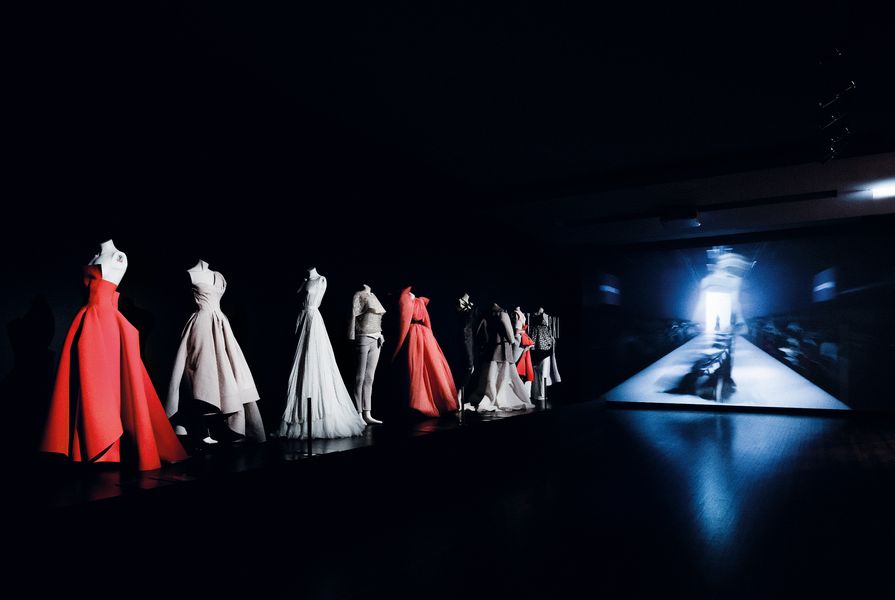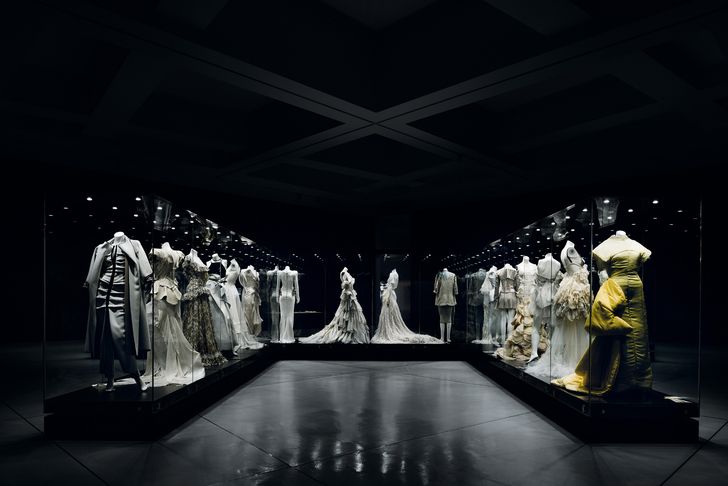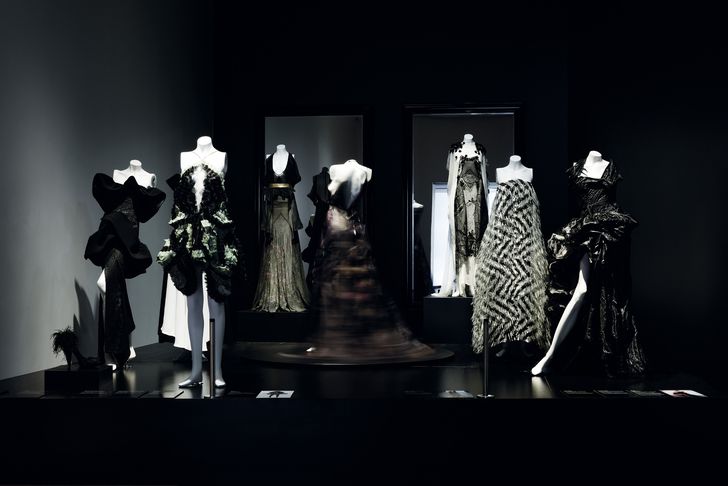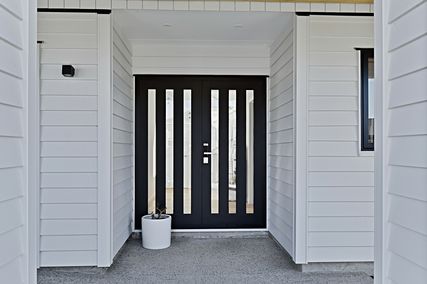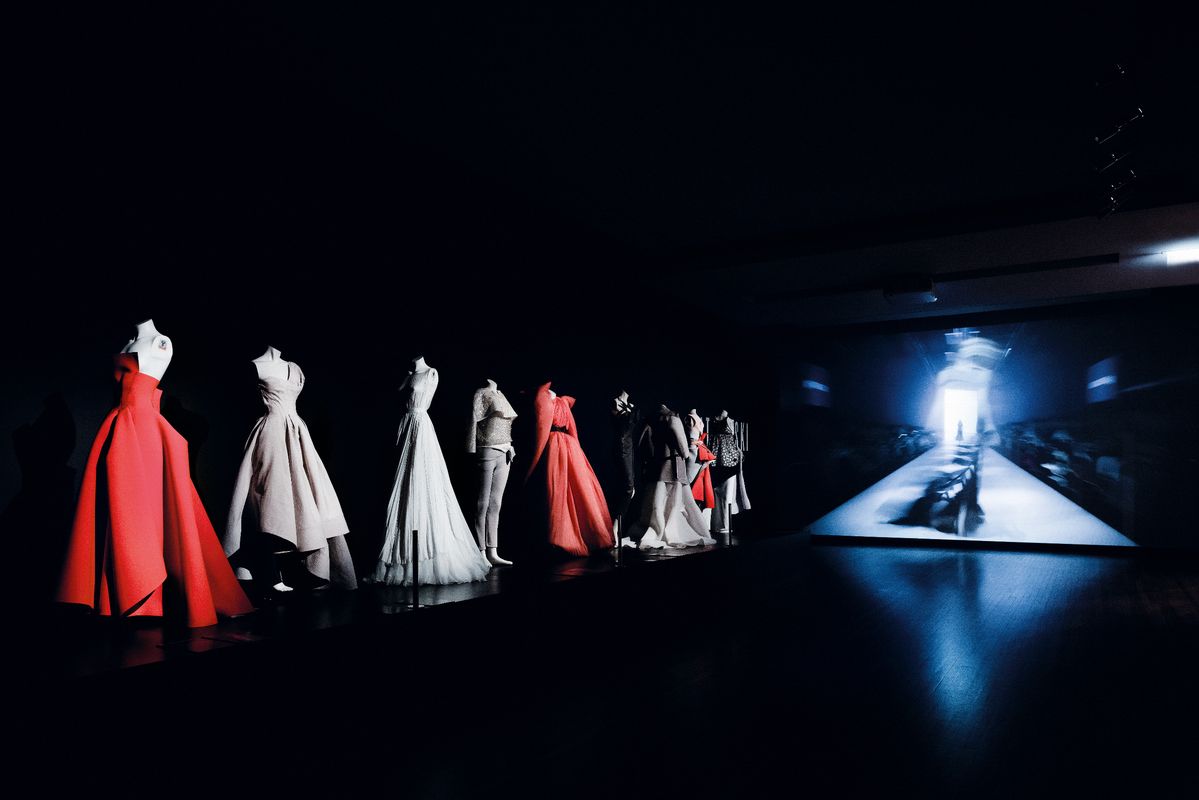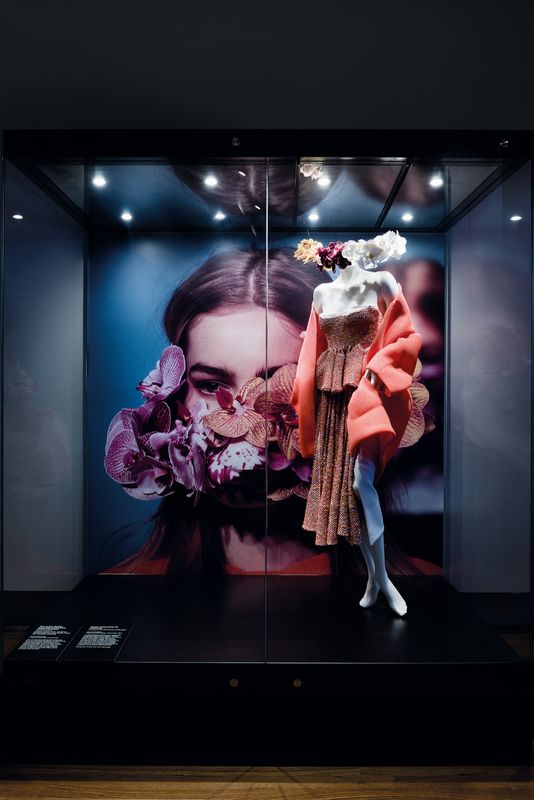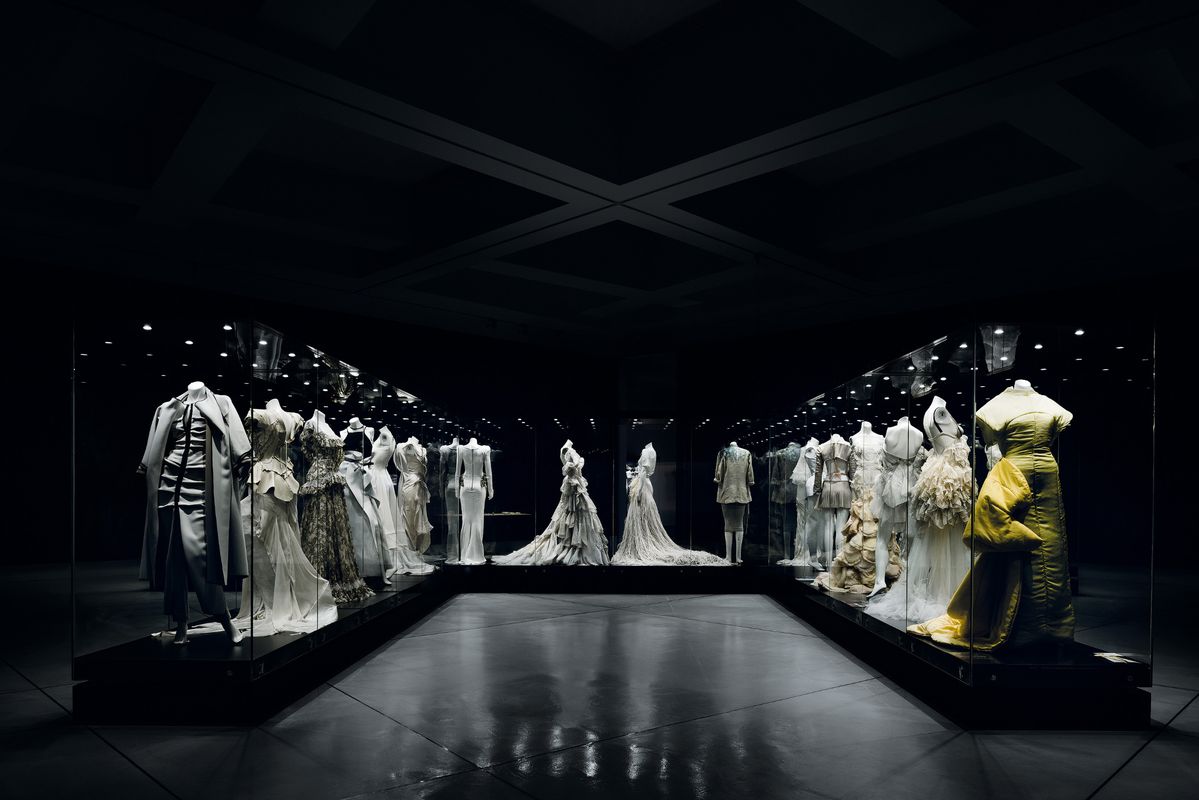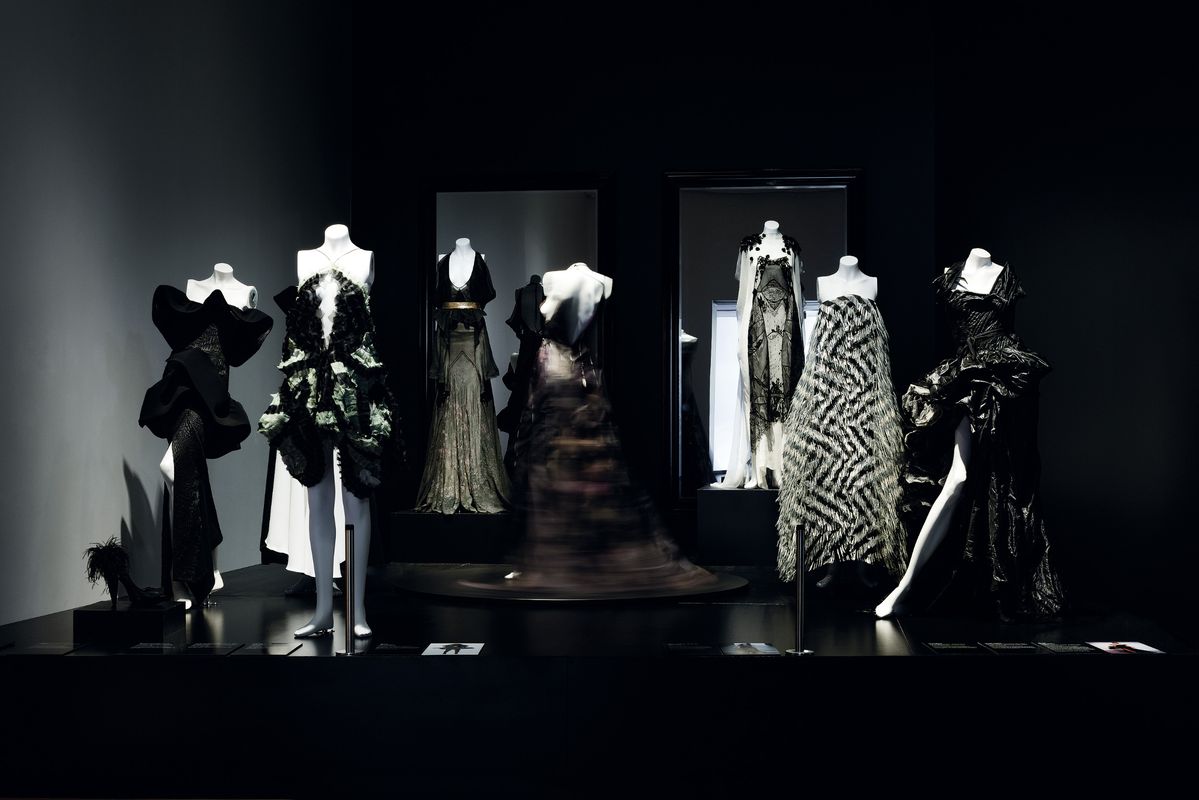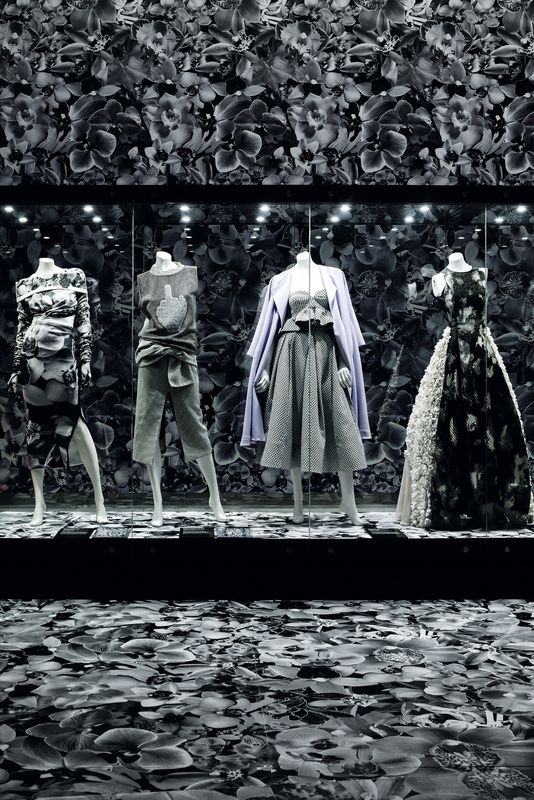Australian fashion designer Toni Maticevski is widely known for his exquisite gowns and their finely crafted detailing. His elegant creations have graced runways around the world and adorned the bodies of celebrities from Crown Princess Mary of Denmark to pop princess Jessica Mauboy. More than sixty ensembles, sourced mostly from Maticevski’s extensive archive, are part of a retrospective exhibition, titled Maticevski: Dark Wonderland, at the Bendigo Art Gallery in regional Victoria.
On the walls of the gallery, the introductory text provides visitors with a hint of what to expect: “A wonderland of design, experimentation, colour, creativity and beauty.” This would not surprise many fashion enthusiasts familiar with Maticevski’s work, but the presentation of the exhibition takes a decidedly “dark” turn from the bright lights and crisp white walls normally found in gallery settings.
“We wanted to create a sense of wonder about the content of the exhibition – they are very beautiful objects,” says Leanne Fitzgibbon, senior curator at the Bendigo Art Gallery. “But also there’s a darkness in there, an undertone to his designs. It’s a little edgy and quite contemporary. I suppose the objects are very beautiful with a twist. The exhibition title reflects the overall tone of the exhibition.”
The “palette and texture” room features large, intersecting glass cases of dresses.
Image: Tom Blachford
This “dark wonderland” is also analogous of the symbiotic relationship of the exhibition content to the exhibition design. The garments presented are “wonder”-ful and the literal darkness of the exhibition design provides the dark undertone.
“[The design] was about a really moody space with pops of bright light onto the garments,” says interior designer Pip McCully of Wonder, the studio that designed the exhibition. “Because Toni’s clothes are so elaborate, detailed and beautiful, our inspiration was to keep it as pared back as possible. We kept the layout fairly streamlined, and the palette pretty minimal – black and white – and then the feature was the theatrical lighting. We almost wanted our part to go unnoticed.”
The exhibition is presented thematically rather than chronologically and makes good use of the existing spaces of the gallery. It occupies seven rooms of Bendigo Art Gallery’s new wing, designed by Fender Katsalidis Architects, completed in 2014. The first room, themed “overview,” sets the tone with its black walls and a black “runway” featuring a greatest hits selection of Maticevski’s work.
In the adjoining room, themed “undertone,” the darkness descends. The garments on display include Maticevski’s early works alongside later works, with most of the latter in black. “We start to examine a darker side to his practice here […] and focus on the grittiness to his designs,” Fitzgibbon says. This space has almost a (glamorously) funereal quality to it. One gallery goer was overheard saying gleefully, “I want to be buried in that dress!” as she pointed to one in the back row.
The “undertone” room features some of Maticevski’s grittier designs.
Image: Tom Blachford
In the largest space of the exhibition, which was themed “palette and texture,” large, intersecting glass cases dominate the room. Most of the garments in the case are in muted creams and soft greys. The walls of the room are wrapped in black vinyl. “It really highlights Toni’s clever use of palette and how it focuses you on the detail, the form and the texture of each garment,” Fitzgibbon says.
One of the most striking rooms in the exhibition is the orchid room, where the floor and walls are entirely covered in an orchid pattern that is used in one of the displayed garments and also for a runway show. The highly graphic room is an immersive Alice in Wonderland down-the-rabbit-hole kind of experience.
The exhibition also features Maticevski’s collaborations with dance companies such as the Australian Ballet and BalletLab to create costume designs, as well as a wall of his sketchbooks, which give visitors an insight into his inspirations and processes of ideation. The final room of the exhibition features Maticevski’s latest work, which was presented at Australia Fashion Week in Sydney in early 2016.
While the exhibition feels dark, McCully explains only two of the seven rooms have dark walls. The dark effect is achieved through the moodiness of the lighting. “It feels like a black space and that’s because lighting is spot to the clothes not to where you walk,” says McCully, who made minimal changes to the existing space to achieve the desired effect. “There’s probably more white walls than black walls strangely enough. We only needed to add black in certain areas for it to be darker in those two spaces. So it was bit of a trick, I guess.”
Maticevski: Dark Wonderland is on show at the Bendigo Art Gallery until 15 January 2017.
Source
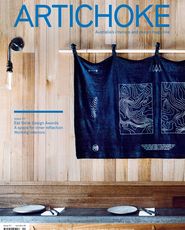
Discussion
Published online: 10 Jan 2017
Words:
Linda Cheng
Images:
Tom Blachford
Issue
Artichoke, December 2016

